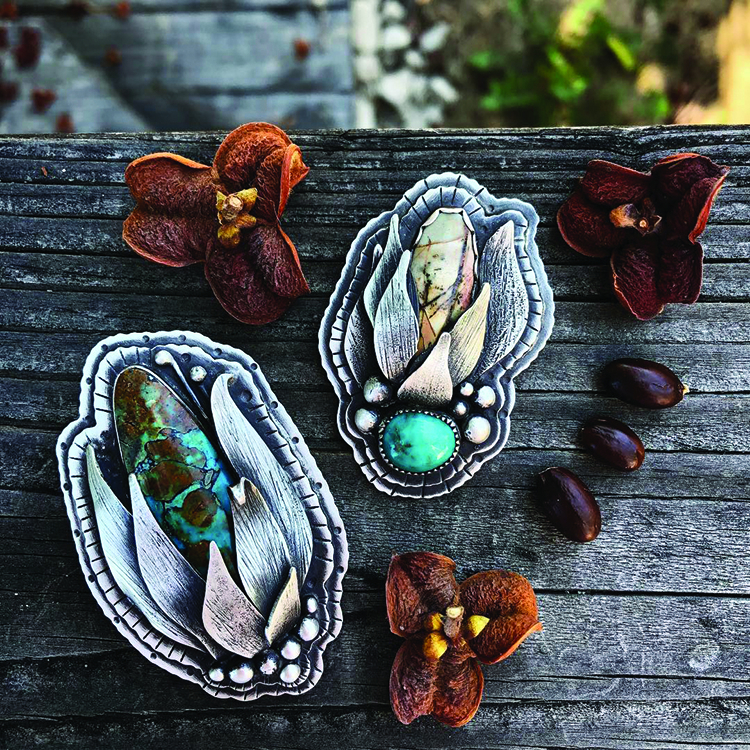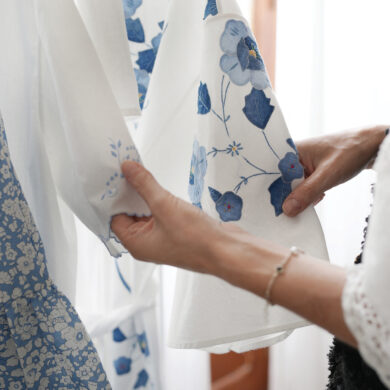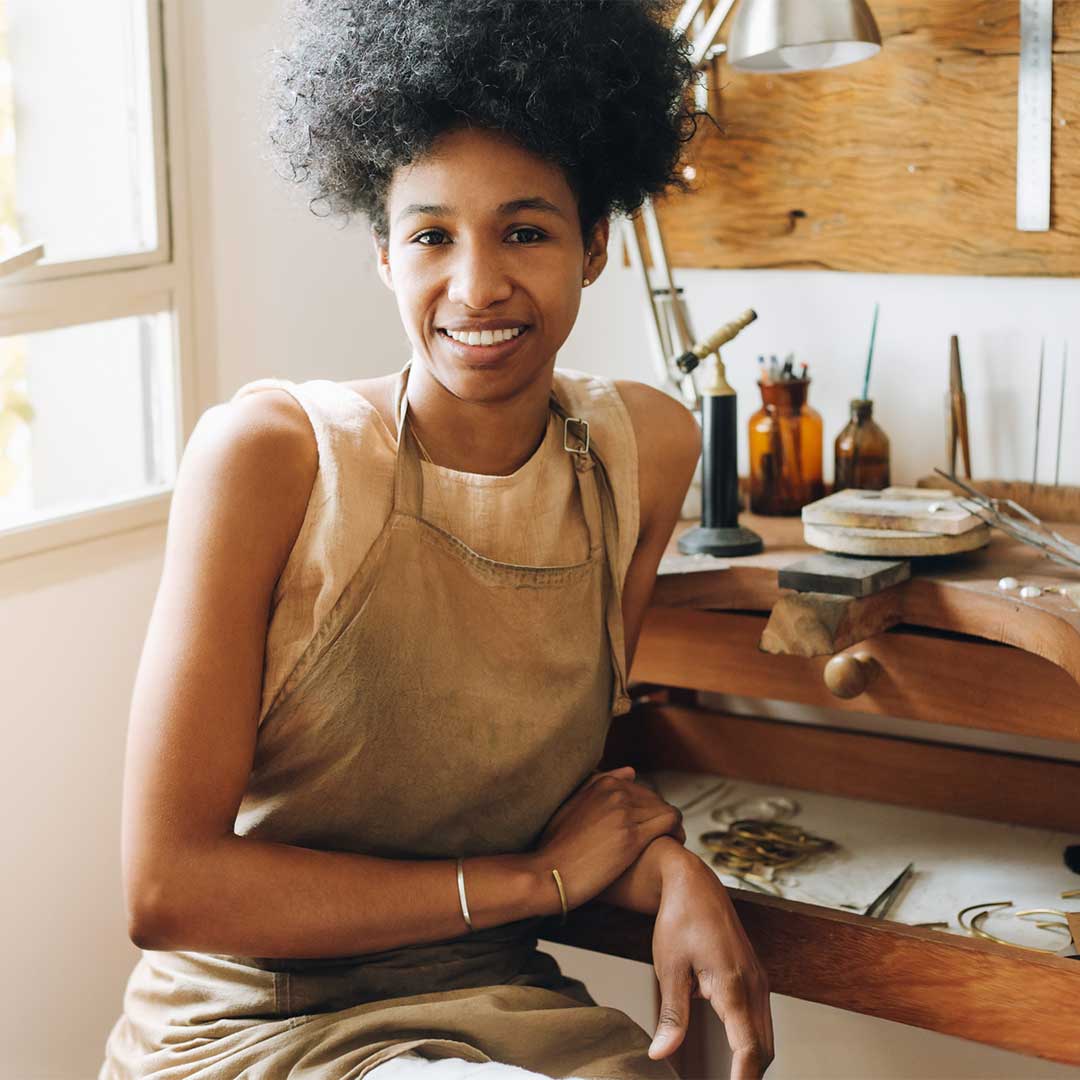
Throughout my life I have split my time between Southern California and Virginia Beach, VA. I lived in Oceanside, CA for most of my youth. My family moved to Virginia Beach when I was 15 years old and I went to middle school and high school in Virginia. I am an only child; it was lonely sometimes though and I used to spend a lot of time in my room drawing. In high school I enjoyed art classes the most, I would try any type of art class I was able to sign up for. In my free time however, I mainly drew using either colored pencils or charcoal.
“If you limit your choice only to what seems possible or reasonable, you disconnect yourself from what you truly want, and all that is left is a compromise.”
– Robert Fritz
I attended community college and was working retail but slowly added more work hours and less college hours. I never finished college and got married fairly young. I had a family right away and focused on raising my kids. As an outlet for myself I would occasionally take art classes in my area, but as the years went on there was less time to be creative. I found myself feeling more restless and had a sense that I was losing “me.” I tried to find ways to feel creative by decorating the house or doing various craft projects to fulfill my need to make some type of art, but never seemed to find one specific thing that I could focus on.

As time went on I fell away from practicing any type of traditional art, life became increasingly hectic, and thoughts of doing anything creative were pushed to the back of my mind. I got divorced in my mid 30’s and found myself in need of a job. Having been out of the work force for a long time, I was frustrated with my slim options and needed a plan. Through a random conversation with a neighbor I heard about GIA and the jewelry fabrication classes they offered.
I studied at GIA (The Gemological Institute of America) full-time and completed their Graduate Jeweler program. Learning to fabricate jewelry has led me down the artistic and creative career path that I had always longed to have. I have owned my own business and have been making jewelry full time since my graduation.

When I took classes at GIA, it opened my eyes to a whole new world I didn’t know existed. Mixed media collage, drawing and painting had always been my outlet of choice, but once I found metalwork I fell in love. To me, fabricating jewelry is like telling a story with metal. I enjoy creating little scenes using sterling silver and stone. Being able to form and fabricate a piece of art jewelry that a person can take with them every day, that is meaningful to them, and that they can wear close to their heart is an amazing feeling. I work in mainly sterling silver, but I also use copper and brass as accent metals. Lately I have enjoyed adding thread to my work, “sewing” the metal so to speak. I chose jewelry fabrication because it was a medium that fulfilled my creative spirit and at the same time allowed me to make a living, while also being home to raise my kids.
My creative process starts with a particular idea for a design. If my design is going to be stone centric, the first step is choosing the perfect stone or stones that will complement the rest of the design. I like to map the design out on paper beforehand. I try to get a basic idea of how I will cut the metal to make it do what I have envisioned by using the paper pieces and arranging them as I would sterling silver. This step helps me work through the design process and lets me know whether I will be able to make the metal form the same way that I see it in my head. Sometimes it takes a bit of experimentation to get the idea from my brain to finished product. Although my “paper stage” is a helpful part of the design process, sometimes the metal doesn’t want to cooperate and I have to figure out ways to work through design issues that pop up.

Those are the times that I’ve stumbled upon a technique or way of fabricating that I now use on a regular basis. Once the pieces of metal are cut out and the foundation for the base of my idea is set, then it’s a matter of finessing the piece to life using my metal of choice. I am forming, bending, layering and soldering until the design is tangible. Once the basic piece is fabricated, that’s when the decorative stamping, adding texture and small details come into play. Finally, the piece is ready for finishing, sanding, oxidizing and polishing. I hope to convey a sense of movement in my work. I enjoy the challenge of making my designs feel fluid and alive.
“My style is narrative, textural, edgy, quirky and bold.”
I like clean lines and striking imagery. I lean towards odd concepts and strive to think outside the box to create bold and interesting jewelry. I typically design pieces that stand out in some way or don’t fit the mold of what traditional silversmithed jewelry often looks like. I was taught the old school method of jewelry making using traditional techniques and tools.

I don’t use a lot of fancy equipment. I have either modified or made many of the tools that I use each day. That said, my favorite item in my studio is the jeweler’s saw that I received in my apprentice kit while at GIA. It works perfectly, and it has become very sentimental to me. The handle is worn, it’s not new and shiny and rust has set in, but I cannot bring myself to use another saw. I have purchased quite a few new saws over the years and however technologically advanced they are supposed to be, or how fancy or beautiful they look, they all eventually sit unused in my studio and I pick up my old faithful.
Having been taught the basic rules of working in metal, it gave me a solid foundation and knowledge of the fabrication process. This allows me to bend the traditional rules and create pieces that are based in solid craftsmanship yet defy the typical silverwork norms.

I think that the artist’s brain is more open to seeing beauty in everyday items and therefore ideas can spark from objects or imagery that many noncreative people would simply look past. I find ideas and inspiration all around me. Graffiti on a building, an advertisement on a bench, the way shapes come together in architecture. All those things have inspired me at one time or another. However, my biggest creative influence is the art of tattooing and traditional style tattoo flash. It has been my main influence since I began fabricating jewelry. My husband has been a tattoo artist for nearly twenty years; it’s natural that those images and ideas spill over and are expressed in my work.
“Frustration and experimentation through the redesign steps have lead me to many ‘aha’ moments!”
My drive and determination to succeed, to create work that stands out, and for my jewelry to be recognized immediately as an “Arrok” piece, along with the incredible support that my husband and family have given me have been large contributors to my evolution as an artist. The industry I am in is quite saturated, especially on social media. The constant barrage of jewelry imagery can weigh heavily on an artist’s psyche. Doubt and comparison can creep into your head. Finding new ways to keep self-doubt at bay and my artistic visions fresh and moving forward is inherent in the process of evolving as an artist.

Throughout my life I have split my time between Southern California and Virginia Beach, VA. I lived in Oceanside, CA for most of my youth. My family moved to Virginia Beach when I was 15 years old and I went to middle school and high school in Virginia. I am an only child; it was lonely sometimes though and I used to spend a lot of time in my room drawing. In high school I enjoyed art classes the most, I would try any type of art class I was able to sign up for. In my free time however, I mainly drew using either colored pencils or charcoal.
“If you limit your choice only to what seems possible or reasonable, you disconnect yourself from what you truly want, and all that is left is a compromise.”
– Robert Fritz
I attended community college and was working retail but slowly added more work hours and less college hours. I never finished college and got married fairly young. I had a family right away and focused on raising my kids. As an outlet for myself I would occasionally take art classes in my area, but as the years went on there was less time to be creative. I found myself feeling more restless and had a sense that I was losing “me.” I tried to find ways to feel creative by decorating the house or doing various craft projects to fulfill my need to make some type of art, but never seemed to find one specific thing that I could focus on.

As time went on I fell away from practicing any type of traditional art, life became increasingly hectic, and thoughts of doing anything creative were pushed to the back of my mind. I got divorced in my mid 30’s and found myself in need of a job. Having been out of the work force for a long time, I was frustrated with my slim options and needed a plan. Through a random conversation with a neighbor I heard about GIA and the jewelry fabrication classes they offered.
I studied at GIA (The Gemological Institute of America) full-time and completed their Graduate Jeweler program. Learning to fabricate jewelry has led me down the artistic and creative career path that I had always longed to have. I have owned my own business and have been making jewelry full time since my graduation.

When I took classes at GIA, it opened my eyes to a whole new world I didn’t know existed. Mixed media collage, drawing and painting had always been my outlet of choice, but once I found metalwork I fell in love. To me, fabricating jewelry is like telling a story with metal. I enjoy creating little scenes using sterling silver and stone. Being able to form and fabricate a piece of art jewelry that a person can take with them every day, that is meaningful to them, and that they can wear close to their heart is an amazing feeling. I work in mainly sterling silver, but I also use copper and brass as accent metals. Lately I have enjoyed adding thread to my work, “sewing” the metal so to speak. I chose jewelry fabrication because it was a medium that fulfilled my creative spirit and at the same time allowed me to make a living, while also being home to raise my kids.
My creative process starts with a particular idea for a design. If my design is going to be stone centric, the first step is choosing the perfect stone or stones that will complement the rest of the design. I like to map the design out on paper beforehand. I try to get a basic idea of how I will cut the metal to make it do what I have envisioned by using the paper pieces and arranging them as I would sterling silver. This step helps me work through the design process and lets me know whether I will be able to make the metal form the same way that I see it in my head. Sometimes it takes a bit of experimentation to get the idea from my brain to finished product. Although my “paper stage” is a helpful part of the design process, sometimes the metal doesn’t want to cooperate and I have to figure out ways to work through design issues that pop up.

Those are the times that I’ve stumbled upon a technique or way of fabricating that I now use on a regular basis. Once the pieces of metal are cut out and the foundation for the base of my idea is set, then it’s a matter of finessing the piece to life using my metal of choice. I am forming, bending, layering and soldering until the design is tangible. Once the basic piece is fabricated, that’s when the decorative stamping, adding texture and small details come into play. Finally, the piece is ready for finishing, sanding, oxidizing and polishing. I hope to convey a sense of movement in my work. I enjoy the challenge of making my designs feel fluid and alive.
“My style is narrative, textural, edgy, quirky and bold.”
I like clean lines and striking imagery. I lean towards odd concepts and strive to think outside the box to create bold and interesting jewelry. I typically design pieces that stand out in some way or don’t fit the mold of what traditional silversmithed jewelry often looks like. I was taught the old school method of jewelry making using traditional techniques and tools.

I don’t use a lot of fancy equipment. I have either modified or made many of the tools that I use each day. That said, my favorite item in my studio is the jeweler’s saw that I received in my apprentice kit while at GIA. It works perfectly, and it has become very sentimental to me. The handle is worn, it’s not new and shiny and rust has set in, but I cannot bring myself to use another saw. I have purchased quite a few new saws over the years and however technologically advanced they are supposed to be, or how fancy or beautiful they look, they all eventually sit unused in my studio and I pick up my old faithful.
Having been taught the basic rules of working in metal, it gave me a solid foundation and knowledge of the fabrication process. This allows me to bend the traditional rules and create pieces that are based in solid craftsmanship yet defy the typical silverwork norms.

I think that the artist’s brain is more open to seeing beauty in everyday items and therefore ideas can spark from objects or imagery that many noncreative people would simply look past. I find ideas and inspiration all around me. Graffiti on a building, an advertisement on a bench, the way shapes come together in architecture. All those things have inspired me at one time or another. However, my biggest creative influence is the art of tattooing and traditional style tattoo flash. It has been my main influence since I began fabricating jewelry. My husband has been a tattoo artist for nearly twenty years; it’s natural that those images and ideas spill over and are expressed in my work.
“Frustration and experimentation through the redesign steps have lead me to many ‘aha’ moments!”
My drive and determination to succeed, to create work that stands out, and for my jewelry to be recognized immediately as an “Arrok” piece, along with the incredible support that my husband and family have given me have been large contributors to my evolution as an artist. The industry I am in is quite saturated, especially on social media. The constant barrage of jewelry imagery can weigh heavily on an artist’s psyche. Doubt and comparison can creep into your head. Finding new ways to keep self-doubt at bay and my artistic visions fresh and moving forward is inherent in the process of evolving as an artist.






















